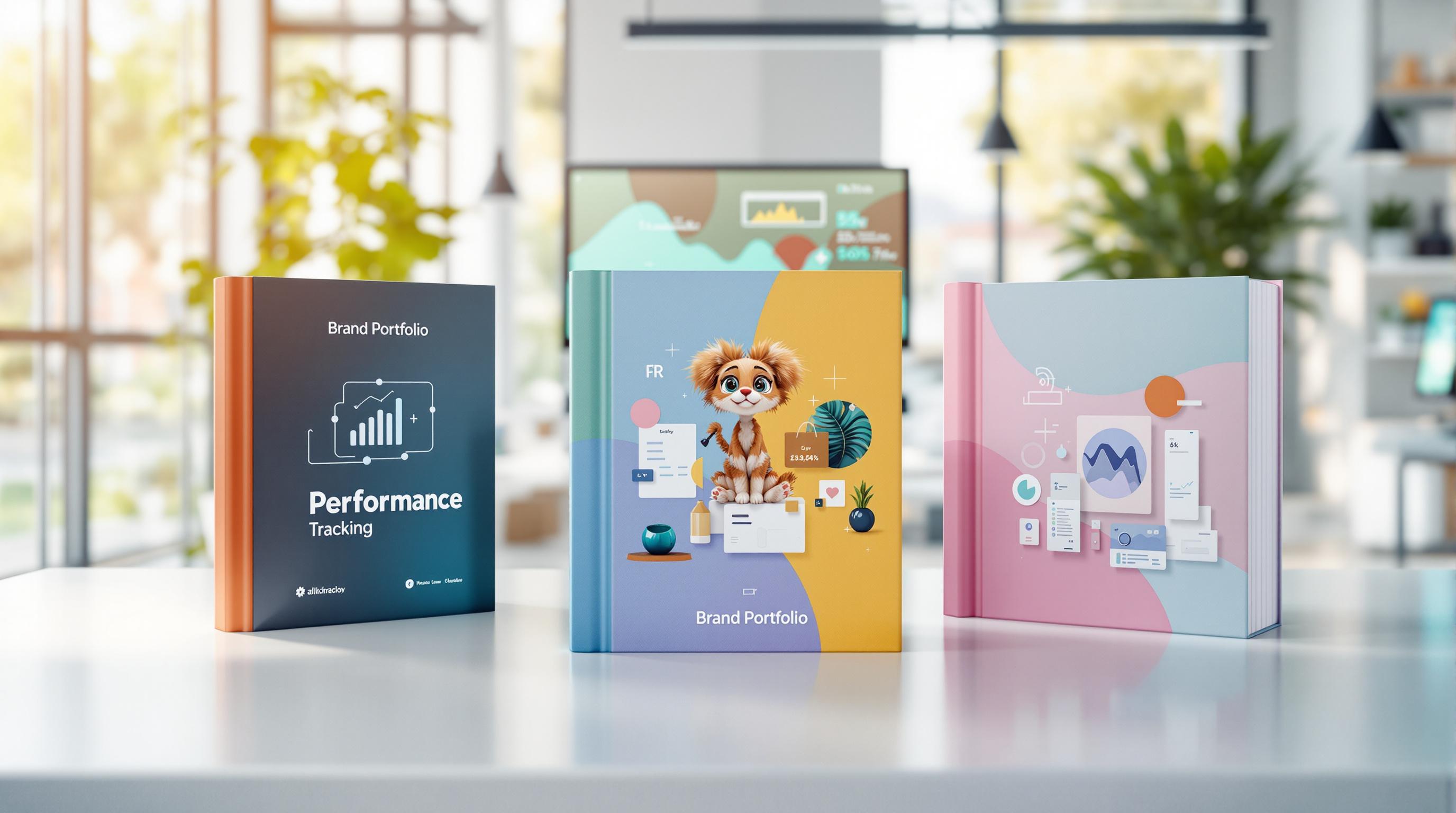Premium offerings in B2B help businesses stand out, increase revenue, and boost customer loyalty. They focus on delivering superior performance, customized solutions, dedicated support, and value-added services that address specific client needs. Here’s how to create and market premium solutions effectively:
- Identify Opportunities: Use customer feedback, analyze competitors, and study market gaps to design tailored solutions.
- Build Value-Based Pricing: Offer tiered pricing models that align with the benefits provided, such as Basic, Professional, and Enterprise tiers.
- Highlight Value: Showcase ROI, exclusive benefits, and success stories to communicate the worth of premium services.
- Refine Regularly: Use metrics like revenue growth, customer retention, and feature adoption to improve offerings over time.
Premium offerings are not just about charging more - they’re about solving critical challenges and delivering measurable results. Focus on understanding your clients, crafting solutions that matter, and continuously improving to stay competitive.
What Premium Offerings Mean in B2B
What Are Premium Offerings?
In B2B markets, premium offerings are high-value solutions designed to address specific business challenges while supporting growth objectives. These go beyond standard products or services by delivering enhanced performance, tailored features, and dedicated support.
Here’s what sets them apart:
| Characteristic | Description |
|---|---|
| Superior Performance | Advanced features and reliability that exceed basic options |
| Customization | Solutions tailored to meet unique business needs |
| Support | Dedicated customer service and priority assistance |
| Value-Added Services | Extras like training, consulting, or exclusive tools that complement the core offering |
These elements combine to justify higher pricing while delivering measurable value to businesses. Understanding these core aspects is key to appreciating the benefits these offerings bring to both providers and clients.
Benefits of Premium Offerings
Premium offerings provide clear advantages for both B2B providers and their clients. According to TSIA's 2018 Service Offer Design Survey, businesses that segment their services based on customer needs are more likely to succeed with premium-level support [1].
For Providers:
- Increased profit margins and customer lifetime value
- Stronger differentiation from competitors
- Boosted brand reputation
For B2B Clients:
- Access to personalized support and advanced tools
- Enhanced operational efficiency
- Solutions tailored to their specific challenges
These offerings help build lasting relationships by focusing on delivering meaningful value that directly impacts business outcomes. Companies that implement premium service tiers often see higher customer satisfaction and retention rates [3].
How to Identify Opportunities for Premium Offerings
Analyzing the Market and Customers
To spot opportunities for premium offerings, start by understanding your customers' changing needs and challenges. Businesses that tailor their services based on customer insights often see better results with premium support options [1].
Here’s what to focus on:
- Map customer touchpoints: Pinpoint where upgraded solutions could tackle specific challenges.
- Review usage patterns: Look for recurring issues or demands that premium features could address.
After identifying customer needs, take a close look at how your competitors are handling these gaps.
Learning from Competitors
Dig into competitor offerings - features, service levels, pricing, and positioning - to find areas where you can stand out. The goal isn’t to copy but to uncover unmet needs and create something better.
Competitor analysis reveals market gaps, but customer feedback ensures your premium features hit the mark.
Using Customer Feedback
Customer feedback is a goldmine for discovering premium opportunities. Use surveys, analytics, and support ticket reviews to figure out which features are in demand.
Some effective ways to gather feedback:
- Surveys: Ask customers what features they want and how much they’d pay for them.
- Usage analytics: Identify the most-used features among current customers.
- Support ticket reviews: Spot frequent requests that could be addressed with premium services.
Resources like The B2B Ecosystem's directories and market insights can help validate trends and refine your premium feature ideas before launching.
How to Implement Value-based Pricing in B2B Enterprises
Steps to Create and Position Premium Offerings
After identifying opportunities for premium solutions, the next step is crafting and presenting these offerings in a way that maximizes their appeal and profitability.
Building Pricing Models Based on Value
Pricing based on value means setting prices that reflect the specific benefits your solution delivers. This could include cost savings, increased revenue, time efficiency, or reduced risks.
For example, TSIA's Service Offer Design Survey found that companies tailoring services to customer revenue levels saw much higher adoption rates for premium support options [1].
Using Tiered Pricing Options
Offer clear service tiers that provide increasing levels of value:
| Tier | Description |
|---|---|
| Basic | Core features with standard support, ideal for small teams |
| Professional | Advanced features and priority support, perfect for growing businesses |
| Enterprise | Custom solutions with dedicated account management for large organizations |
Each tier should offer enough additional value to encourage upgrades, while still making sense to customers [1].
Positioning Premium Offerings
Positioning premium solutions effectively depends on clear communication about their value. Use customer feedback and market insights to align these offerings with the challenges your audience cares about most.
Key strategies for positioning:
- Emphasize Exclusive Benefits: Highlight features that address specific pain points. For instance, Factors.ai focused on SaaS companies with over 10,000 monthly website visitors, which led to higher engagement rates [2].
- Prove ROI and Build Trust: Use customer success stories, data, and industry recognition to showcase measurable results. Businesses that clearly communicate the benefits of their premium offerings often see better customer satisfaction and loyalty [1].
Once you’ve nailed pricing and positioning, the focus shifts to marketing and selling these premium offerings effectively.
sbb-itb-01010c0
How to Market and Sell Premium Offerings
Marketing premium B2B products or services requires a well-thought-out approach that emphasizes their value and builds trust with potential clients.
Highlighting the Value of Premium Offerings
To communicate the value of premium offerings, focus on what sets them apart. Emphasize the return on investment (ROI), long-term savings, and exclusive features that directly address client challenges. According to TSIA's research, companies that excel at showcasing premium value tend to see increased revenue growth and higher customer satisfaction [1].
Leveraging Content Marketing to Build Trust
Content marketing can play a key role in promoting premium offerings. Use it to educate your audience, establish credibility, and show tangible results. Here's how different content types can help:
| Content Type | Purpose | Key Elements |
|---|---|---|
| Whitepapers | In-depth technical insights | Research data, industry trends, solution comparisons |
| Case Studies | Demonstrating success | Real-world outcomes, ROI metrics, client testimonials |
| Webinars | Engaging education | Live demos, Q&A sessions, practical tips for implementation |
These formats allow you to connect with decision-makers by addressing their concerns and showcasing your expertise.
Using Tools Like The B2B Ecosystem

Platforms such as The B2B Ecosystem can strengthen your strategy by offering tools for market analysis, pricing strategies, and go-to-market planning. They help identify the right audience and refine your positioning to make the biggest impact.
Once your marketing efforts are in place, it’s essential to regularly review and improve your premium offerings to stay ahead of the competition.
How to Evaluate and Improve Premium Offerings
Measuring Key Metrics
To assess and refine premium offerings, focus on tracking essential KPIs that highlight both business performance and customer satisfaction. Here's a quick breakdown:
| Metric Category | Key Indicators | Measurement Method |
|---|---|---|
| Financial Performance | Revenue growth, profit margins | CRM tools, financial analytics |
| Customer Success | Retention rates, satisfaction scores | Surveys, usage data |
| Product Adoption | Feature utilization, upgrade rates | Product analytics tools |
| Market Position | Market share, competitor success rates | Industry reports, market analysis |
Using Customer Feedback to Improve
Customer feedback is a goldmine for spotting areas where your offerings can better meet expectations.
"Provide extraordinary value, deliver it incredibly well, and create positive financial impact for the customer." - TSIA [1]
Use existing feedback channels - like surveys, customer reviews, and usage tracking - to pinpoint what needs adjustment. Regular client meetings and check-ins can also uncover insights about what’s working and what isn’t. Prioritize updates based on what customers value most.
Making Regular Updates
Staying competitive means consistently improving your premium offerings. Here’s how to approach updates systematically:
| Update Category | Frequency | Focus Areas |
|---|---|---|
| Minor Updates | Monthly | Bug fixes, UI tweaks |
| Feature Releases | Quarterly | New tools, integrations |
| Major Upgrades | Annually | Platform changes, new modules |
Tools like The B2B Ecosystem's market analysis and AI-driven insights can help you spot customer trends and predict future needs. This ensures your offerings stay ahead of what the market demands.
When rolling out updates, remember that different customer segments - based on industry or company size - may have unique needs. Use data analytics to figure out which groups benefit most from specific features and prioritize accordingly.
Conclusion: Building a Strong Premium Offering Strategy
Creating premium offerings for B2B clients requires a well-thought-out approach that prioritizes delivering high value. Segmenting your audience effectively leads to better satisfaction and loyalty, making it a key part of any premium strategy.
Success in this space isn't just about charging more - it’s about presenting a clear value proposition that makes the investment worthwhile. Here are the three main pillars of a strong premium strategy:
- Value-based pricing: Pricing should reflect the real benefits your offering delivers.
- Customer-focused development: Align your services or products with what your market truly needs.
- Data-driven improvements: Use data to refine and enhance your offerings regularly.
Using the right tools can make this process smoother and more impactful. For instance, platforms like The B2B Ecosystem offer tools such as the Price Strategist and Offer Consultant, which help businesses analyze opportunities and fine-tune their premium offerings.
Leading companies excel by gathering feedback and staying responsive to market demands. This ensures their premium services remain relevant and continue to deliver value as conditions change.
Key areas to focus on for lasting success:
- Measuring performance to track results
- Delivering clear, measurable value to clients
- Staying ahead in a competitive market
FAQs
Here are answers to some common questions about pricing premium offerings in the B2B space:
How should a premium product be priced?
Pricing for a premium B2B product should focus on delivering value. Key factors to consider include:
- Market Analysis: Look for gaps in what competitors are offering.
- Specialized Solutions: Provide high-quality, niche-specific services.
- Brand Credibility: Strengthen your reputation and build trust in the market.
Research from TSIA highlights that companies segmenting their services based on customer revenue often see better results with premium pricing models [1].
What are effective pricing strategies for B2B?
B2B pricing can take several forms, such as:
- Value-based: Pricing tied to measurable benefits for the customer.
- Tiered: Different levels tailored to customer size or needs.
- Usage-based: Charges that scale with how much the client uses.
- Dynamic: Adjusting prices based on market shifts.
- Per-user: Fees based on the number of individual users.
Aligning pricing with customer expectations and perceived value is key. According to TSIA's 2018 Service Offer Design Survey, businesses using strategic models like tiered pricing saw higher customer satisfaction and retention rates [1].
For more complex B2B solutions, consider adding a points or credit system to your premium services. This method offers flexibility while maintaining the perception of value, making it an effective option [1].


